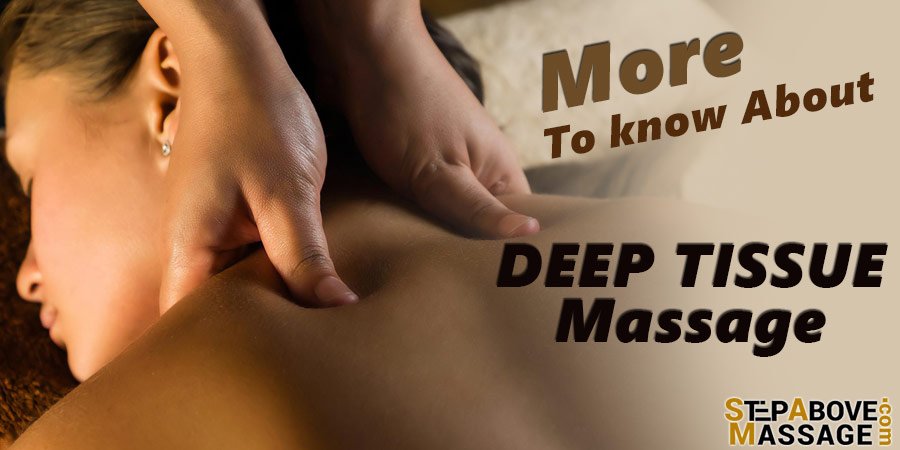Deep tissue massage is a massage type that involves deep pressure on deep layers of tissues and muscles. This massage type is usually performed on patients with chronic pain and strains. Among the benefits of deep tissue massage are pain reduction, break up of knots and scar tissue, enhanced blood circulation, more balanced body chemical, and generally alleviated mental and physical conditions. In this article, we try to answer a few frequently asked questions regarding deep tissue massage.
How Can You Find a Good Deep Tissue Massage Therapist
Similar to any therapeutic services you receive, you have to be utterly cautious about the massage therapist by whom you receive deep tissue massage. In order to find the best deep tissue massage therapist:
- Determine What You Want: Before deciding which therapist to have your deep tissue massage session with, make sure that you know what you expect from the therapy, why you chose this type of massage and what its benefits are for you, and what your overall health objectives are. The more you know about yourself and your needs, the more efficiently your therapist can perform.
- Ask for Referrals: It is preferable that you discuss the whole idea of massage therapy with a medical specialist. Explain your reasons for receiving deep tissue massage and ask your medical specialist to see if they know a credited deep tissue massage therapist. A friend who has successfully undergone deep tissue massage can also recommend a preferred therapist.
- Inspect Resume and Certifications: Ask the massage clinic receptionist to help you in choosing the right therapist. Provide as much information as needed so that you can have different options. In addition, look into the resumes and professional experiences of various massage therapists. Check out specific massage certifications each therapist has and the massage modalities they are trained for.
- Give Them a Try and Be Frank: After carefully selecting your massage therapist, have an introductory massage session with them and meanwhile explain what you expect from your massage therapy sessions in detail. Inform them of any special health conditions you are dealing with. Make sure you give all the necessary information about your health complications if any.
Your therapist will probably explain the level of soreness and pain you may feel during the session before it starts. Be careful not to tolerate too much pain or pressure. Although deep tissue massage is not very comfortable, feeling unnecessary pain does not work either.
After the first introductory massage session, you can decide whether your deep tissue massage therapist fits your massage therapy needs.
What is the Difference Between Deep Tissue Massage and Sports Massage
Although deep tissue massage and sports massage use similar muscle manipulation methods and quite firm strokes including circular movements, tapping, and vibration, these two massage types are different mostly regarding the purposes and goals of massage applications.
- Sports Massage: Sports massage is performed only on serious athletes in order to heal or prevent sports injuries and damages during intense workout sessions or demanding sports matches. In this massage type, muscles and the surrounding tissues are warmed up in order to be prepared for more severe pressure during the workout sessions or sports matches or to speed up the recovery time which the muscles need to heal themselves. The main reason for such an intervention is to promote the athlete’s flexibility and performance as well as better body reaction towards potential muscle injuries.
- Deep Tissue Massage: Deep tissue massage is a deep manipulation of deeper layers of tissues that cover the muscles. Unlike the rather preventive sports massage, the purpose of deep tissue massage is to release the muscle stiffness and knots that are already caused and hurt the client. It is also meant to break up muscle knots and facilitate blood flow throughout the muscles. Therefore, anyone with any type of injury or muscle spasm (if no health complication inhibits) can benefit from deep tissue massage.
Why Do You Feel Sore During and After Deep Tissue Massage
- During the Massage: Deep tissue massage is not as soothing as Swedish massage. The main purpose of deep tissue massage is to help one’s body muscles to heal tightness and chronic pain. In order to fix things, your therapist should apply a certain amount of pressure on the affected areas which can cause soreness and discomfort. The practiced heat and pressure can help in breaking up muscle knots and tears, which makes you feel pain and soreness during the massage session. Moreover, your massage therapist may use techniques such as friction or stripping that involve putting too much pressure against the muscle grains in order to realign muscle fibers in a more appropriate position.
- After the Massage: After the massage is finished, you may also observe bruises in particular areas for which you feel soreness and discomfort. Similar to the slight pain you may feel after an intense workout session, you might feel pain after deep tissue massage. Try to take a rest after the massage session is over, drink as many glasses of water as you can so that your body can accelerate the disposal of toxins extracted during massage therapy as well as restore your body fluids with healthy and freshwater. This can also help your muscles to recover faster.
- Nonetheless, if you feel too much pain or too much soreness, your massage therapist has perhaps applied too much pressure with probably improper strokes and pressure. In case the pain you feel worsens, visit a doctor and do not receive any massage type until complete recovery.
If you live in Raleigh NC and you are looking for professional Massage Services give us a one time try and book with us online to feel the differences










I appreciate you explaining that one of the most soothing massages is a Swedish massage. My spouse has had some issues with her muscles lately and it’s causing her pain. She needs to think about getting massage therapy so that she can remain healthy and active.